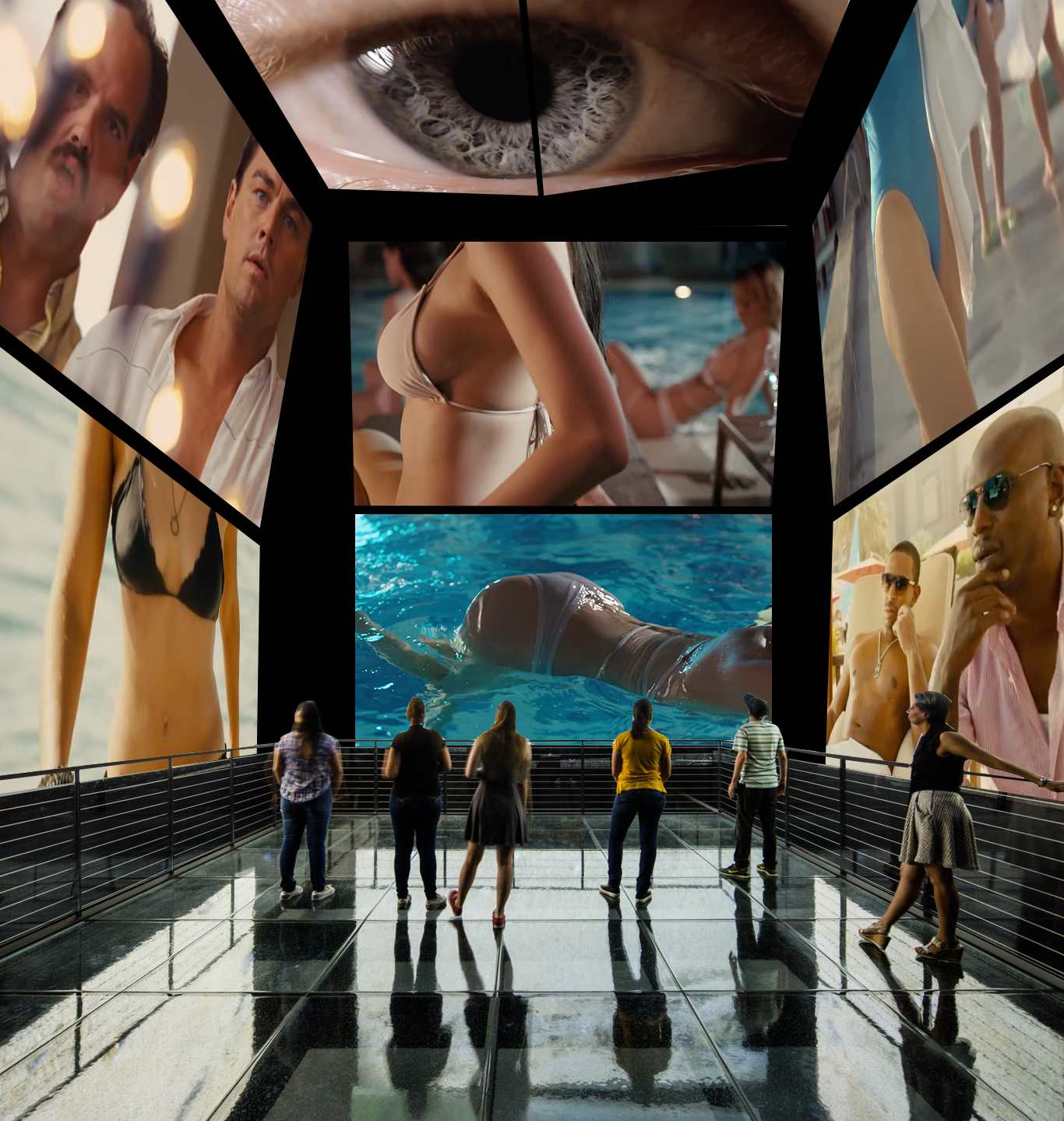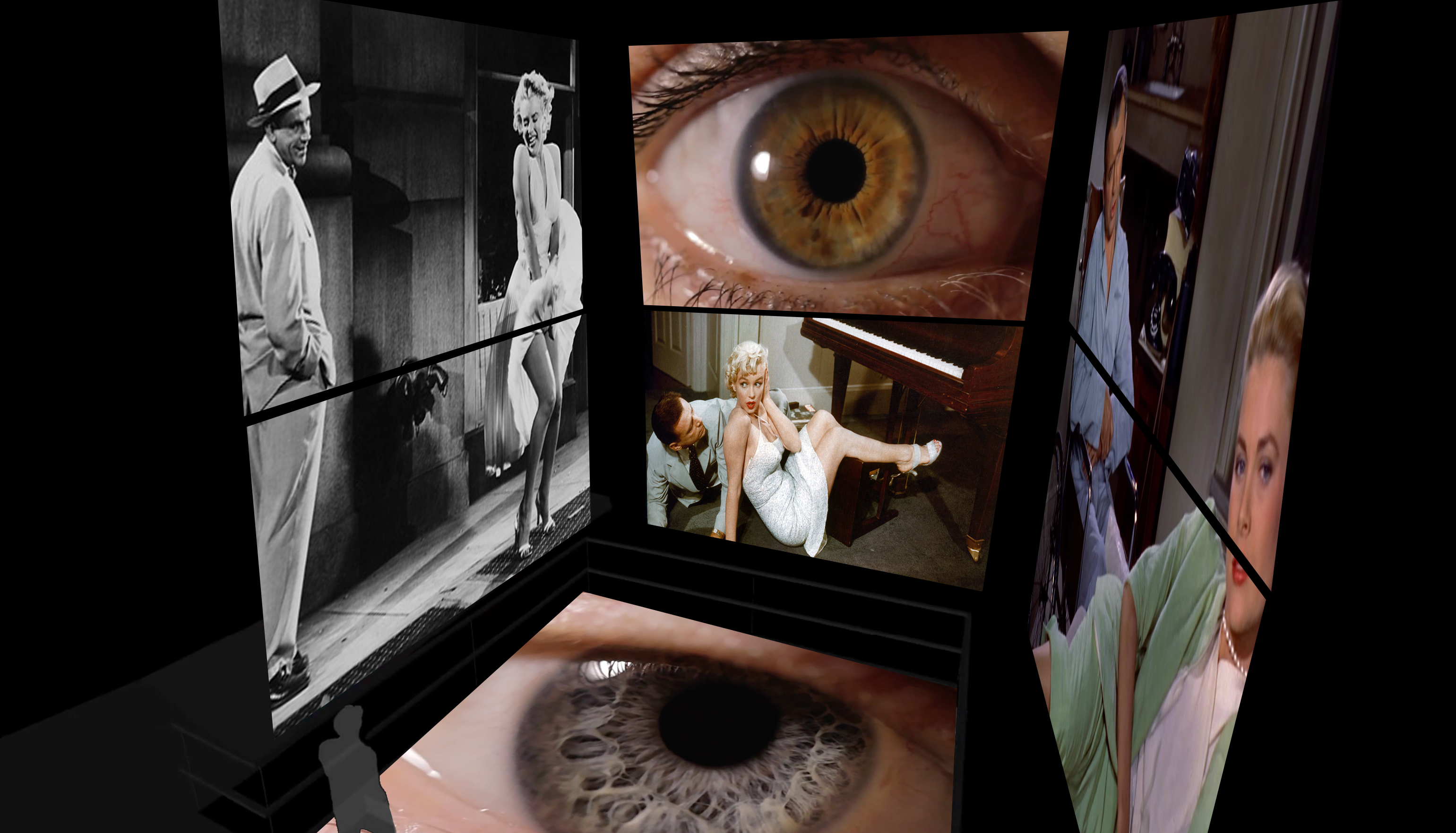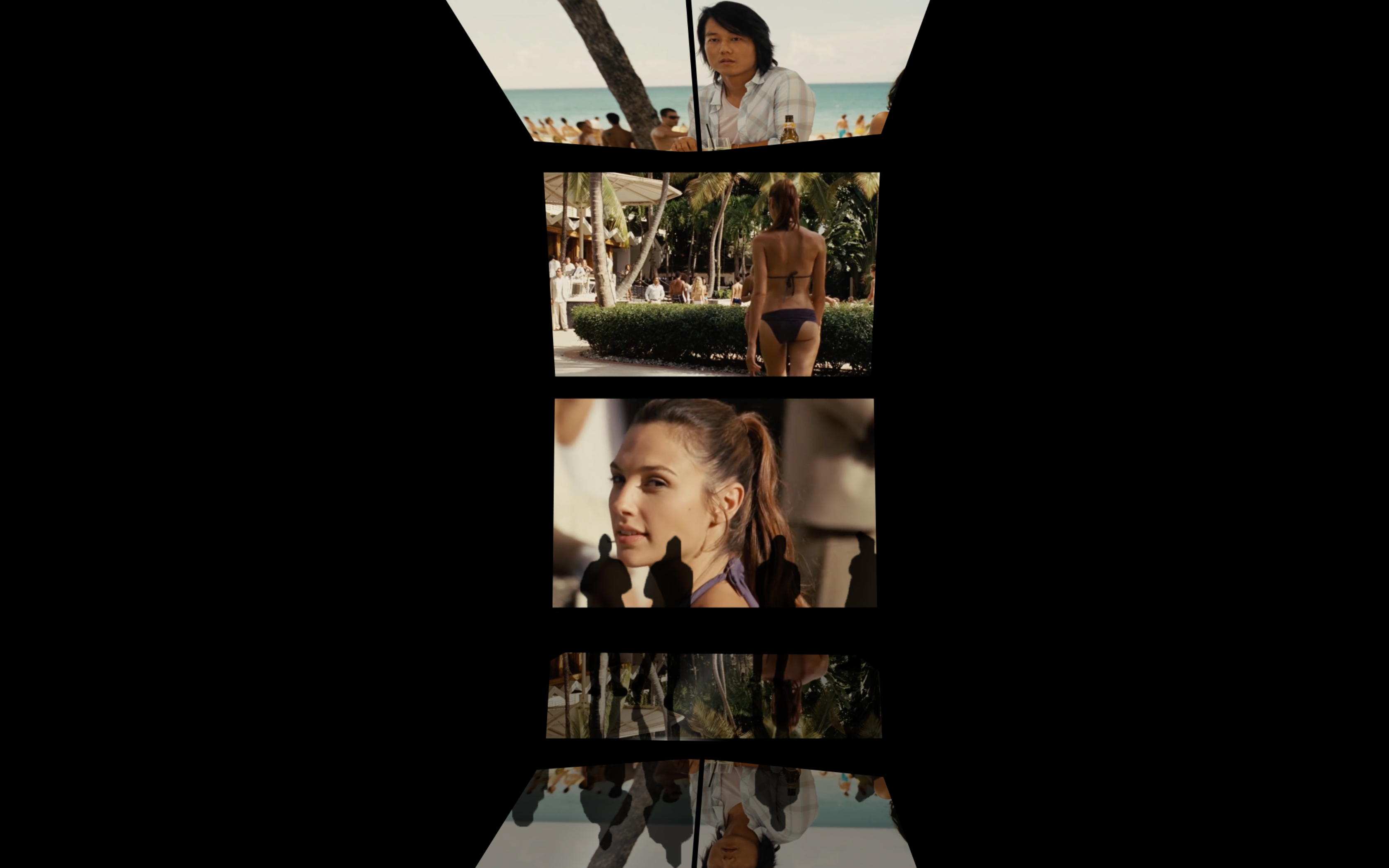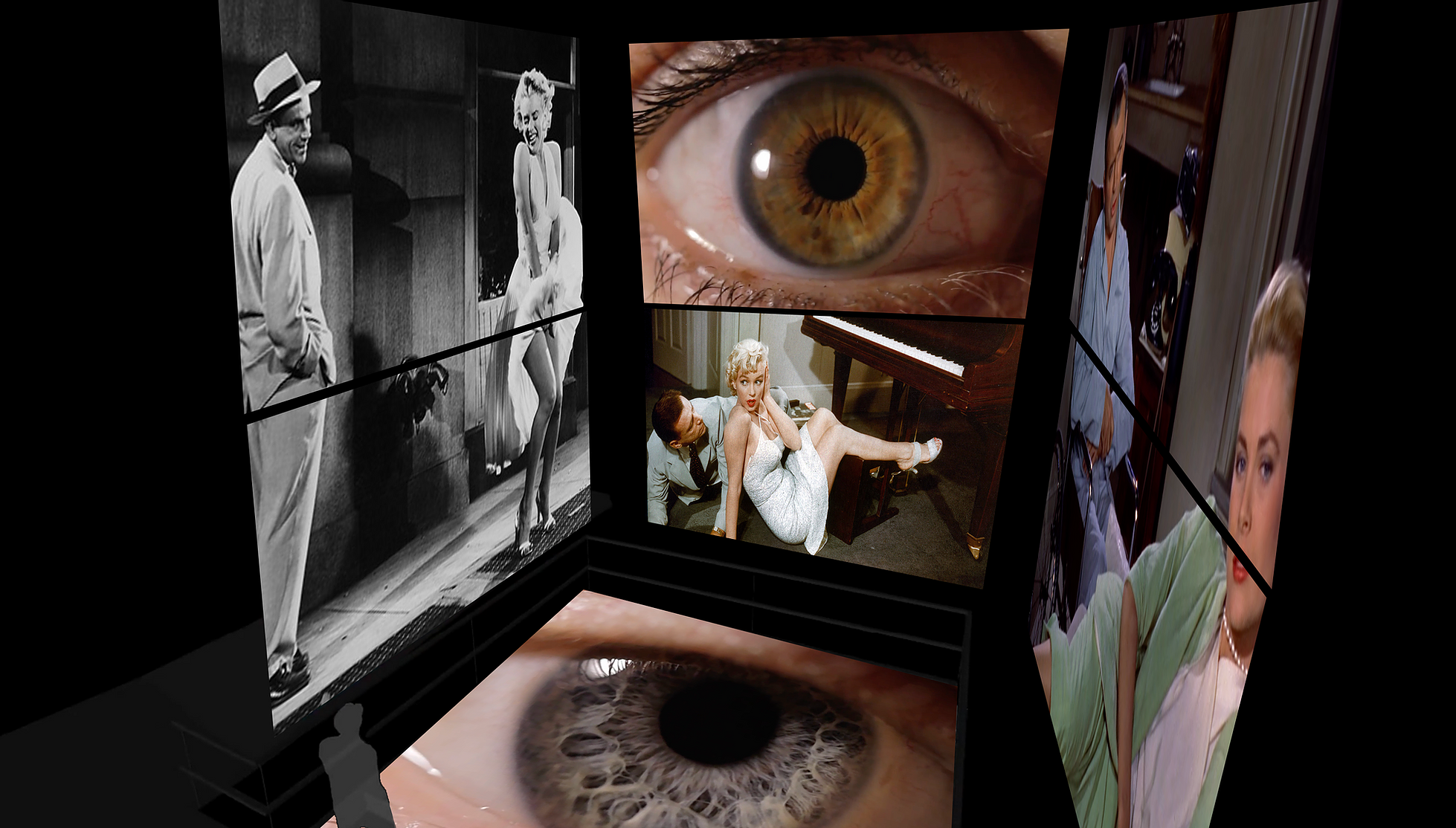
The Gendered Camera (Spatial, Branding, Motion)
Mentor: Carolina Trigo
The Gendered Camera is an immersive exhibition that serves as a social critique on the male gaze in relation to visual pleasure and female objectification. In the male gaze, woman is often times visually positioned as an “object” of heterosexual male desire. A lifetime of seeing women sexualized in television, music videos and advertisements has made us very comfortable with assuming the male gaze. Cinema does not invite women to desire men’s bodies. Rather, female viewers are positioned to identify with a heroine who is herself desired by a man.
The idea of the male gaze is built into our minds unconsciously as we look through social media, magazines, and films. The Gendered Camera aims to find a way to shine light on the issue. Our goal: changing what was once accepted as the “norm” to an issue that’s finally questioned.
See the digital presentation here.
Check out our website here.
The idea of the male gaze is built into our minds unconsciously as we look through social media, magazines, and films. The Gendered Camera aims to find a way to shine light on the issue. Our goal: changing what was once accepted as the “norm” to an issue that’s finally questioned.
See the digital presentation here.
Check out our website here.

Exhibition Promo Video
︎︎︎
︎︎︎
The pleasure we take in cinema—the pleasure of losing ourselves in the film or of experiencing the protagonist’s victories as our own—is possible because the camera’s gaze obscures the conditions of the film’s production and the fact that is a film (the fourth wall). With the fourth wall obscured, we adopt the camera’s gaze as our own. The Gendered Camera aims to break the fourth wall by placing the viewers in a space where they experience the female character being unnecessarily sexualized or objectified through a “gendered” camera angle. This exaggeration will allow viewers to realize how the objectification of women in films is not a truthful and unbiased reflection of how reality works. The installation is broken down into three rooms.
Visual Development Concept
︎︎︎
︎︎︎
The logo frame represents a camera shutter with a symbol of an eye inside. The eye echoes to the idea of "looking" and the gaze in general. The frame isn't fully enclosed, suggesting that the eyes is trying to break through the fourth wall. The chosen monospaced font reflects the style of a typical movie script.
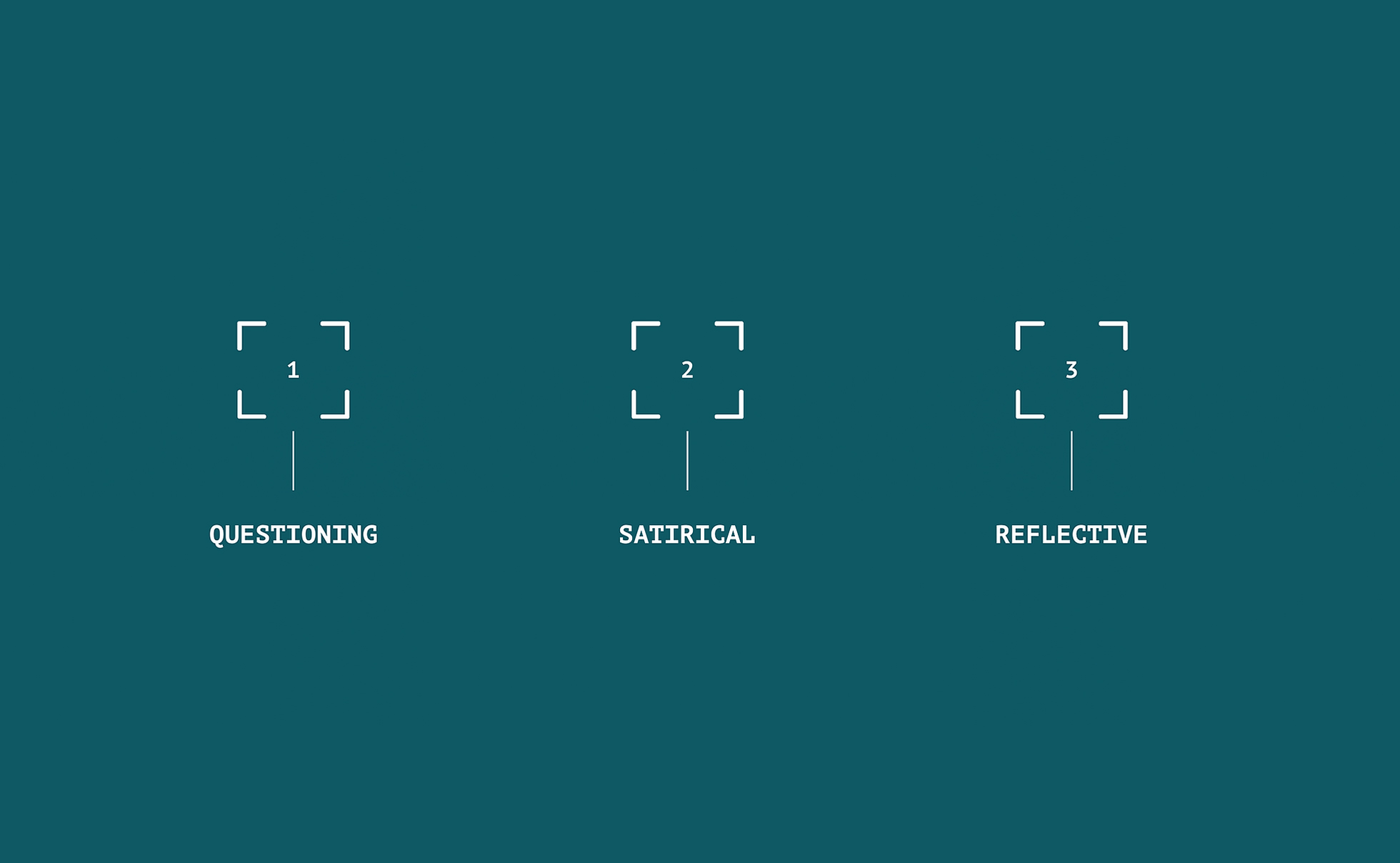
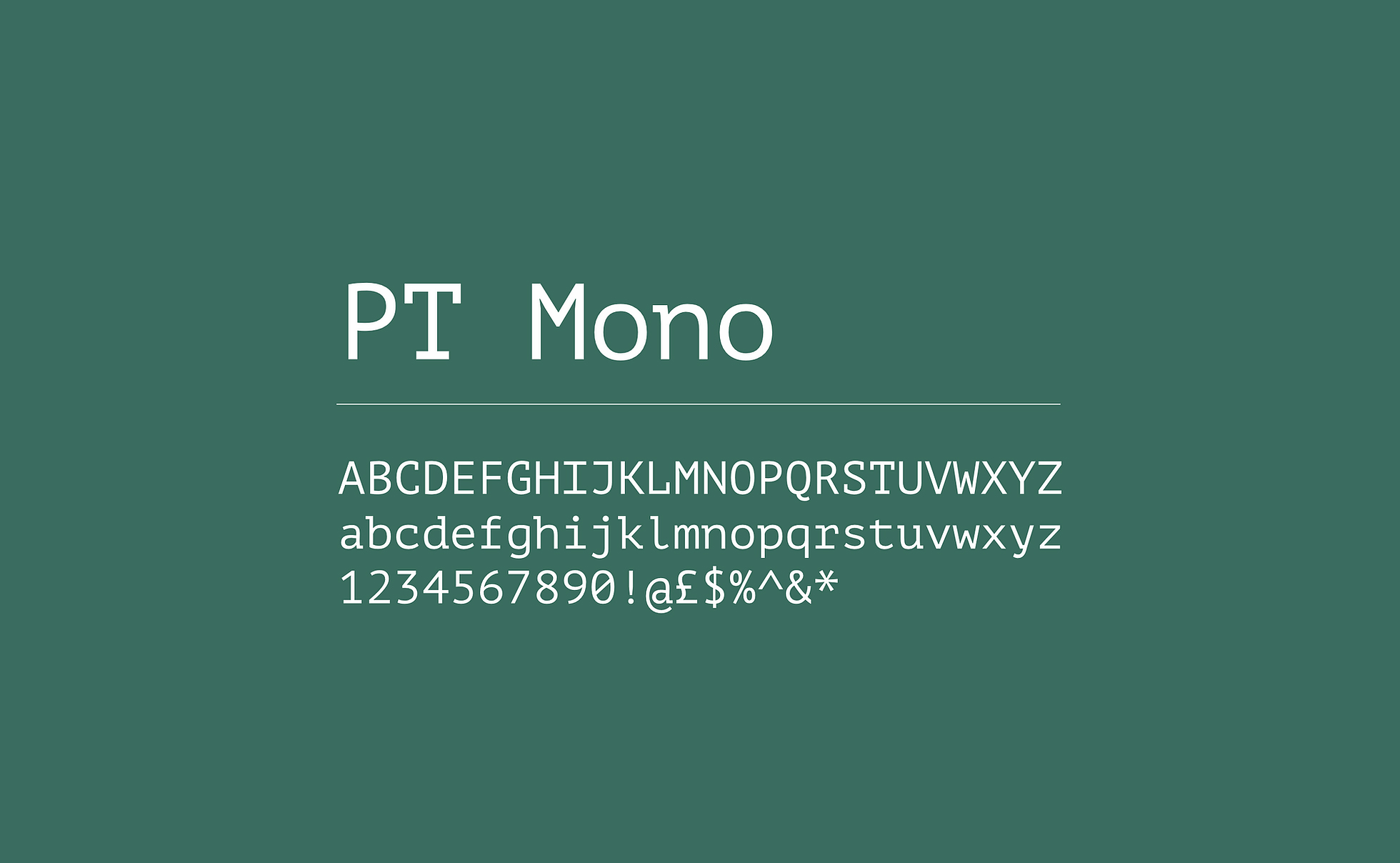
Strategy
︎︎︎
︎︎︎
The promotional poster series serve as a teaser for what the exhibitions are going to be about. Each poster features just one image of a specific body part with the logo “framing” the highlighted part. This is meant to provoke the viewers and generate curiousity.



Products
︎︎︎
︎︎︎

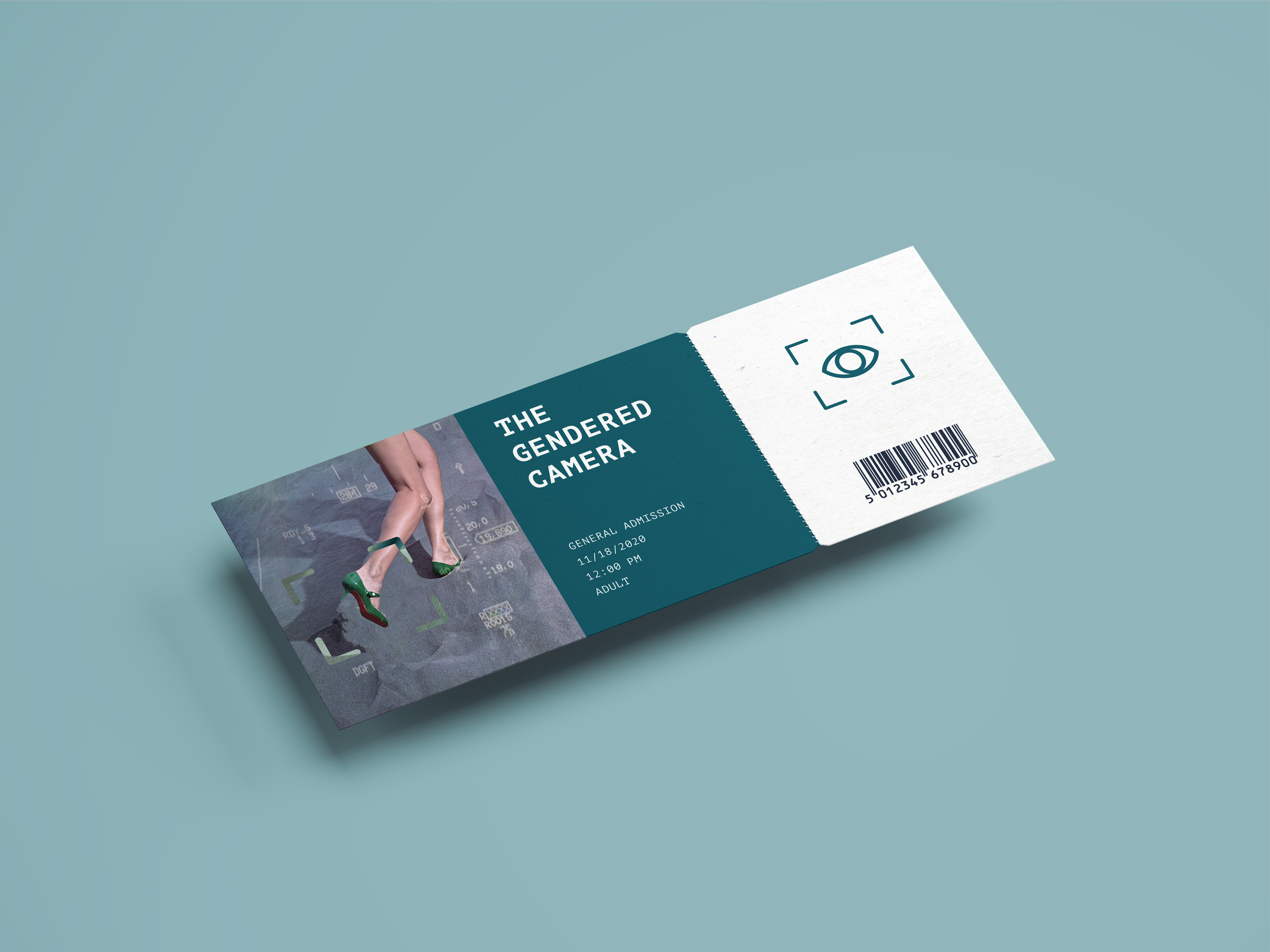

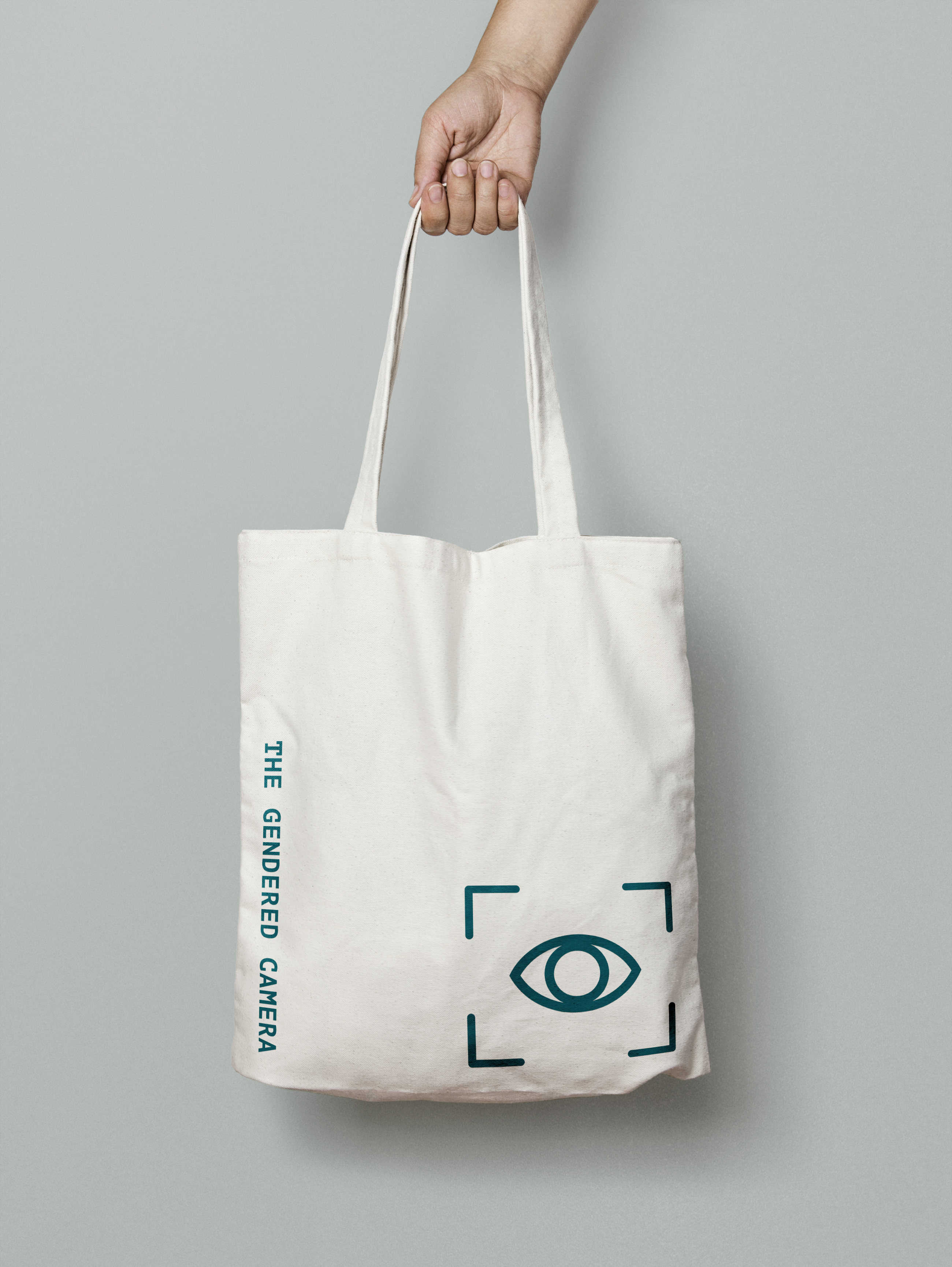
Exhibition Book
︎︎︎
︎︎︎
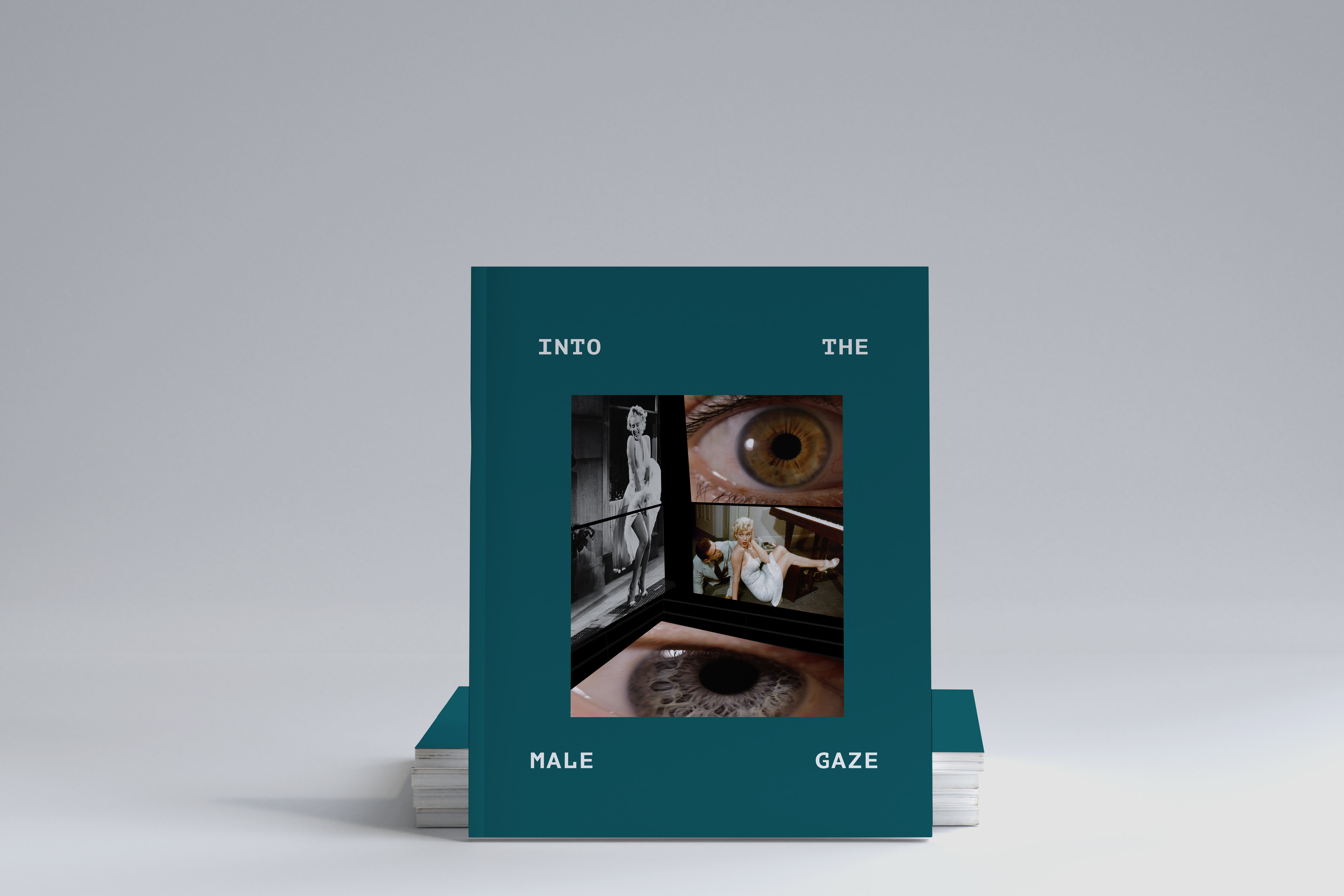


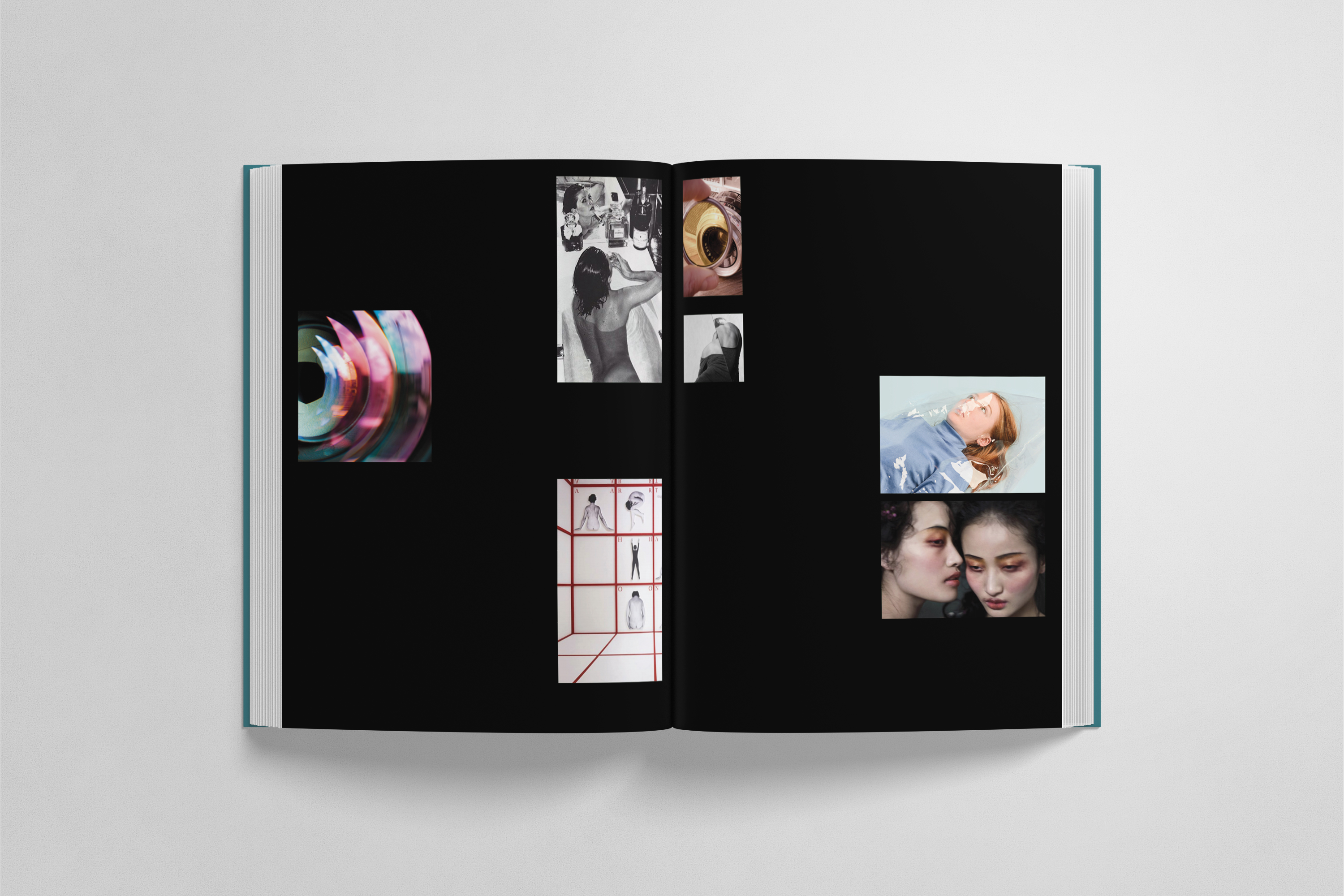
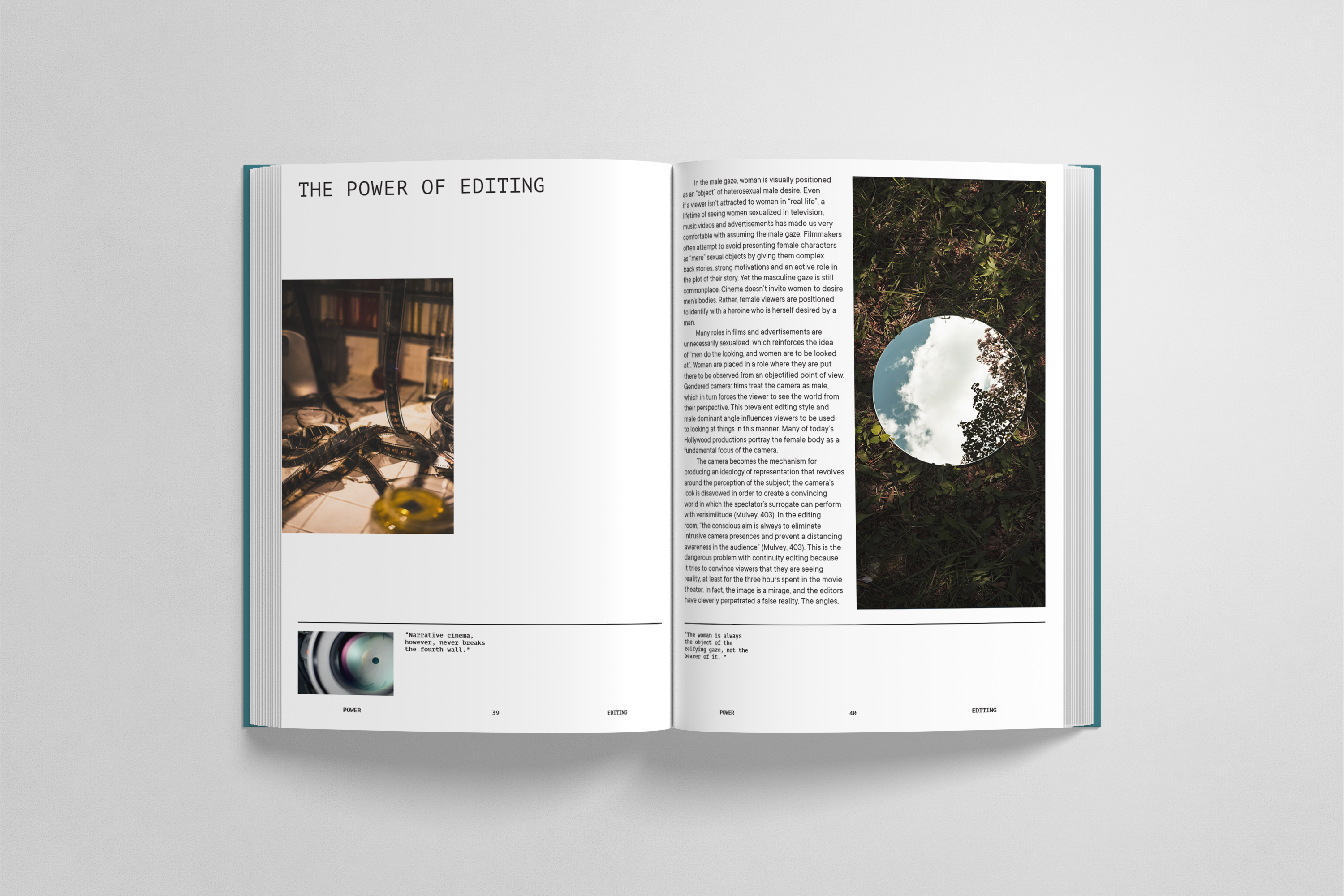
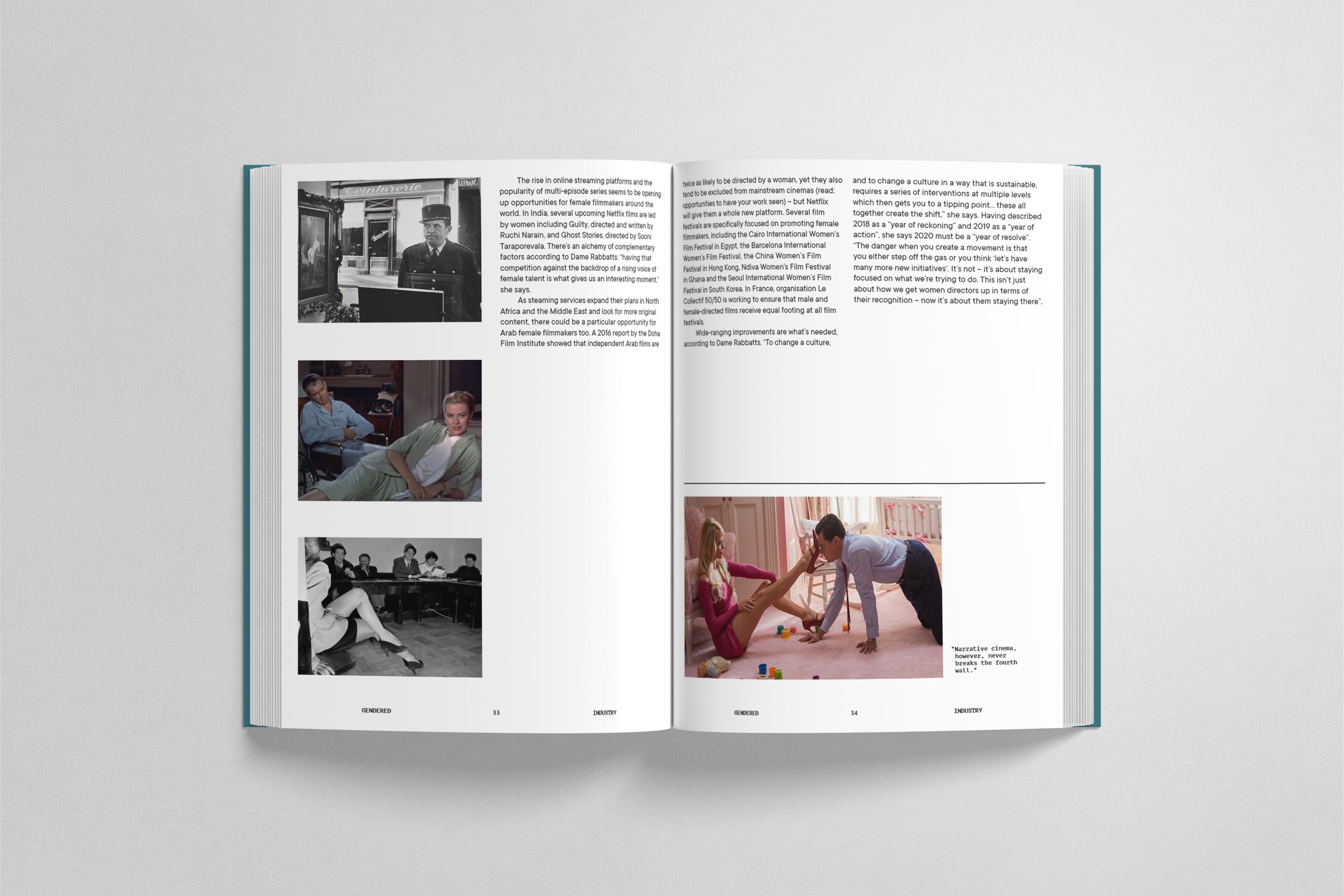

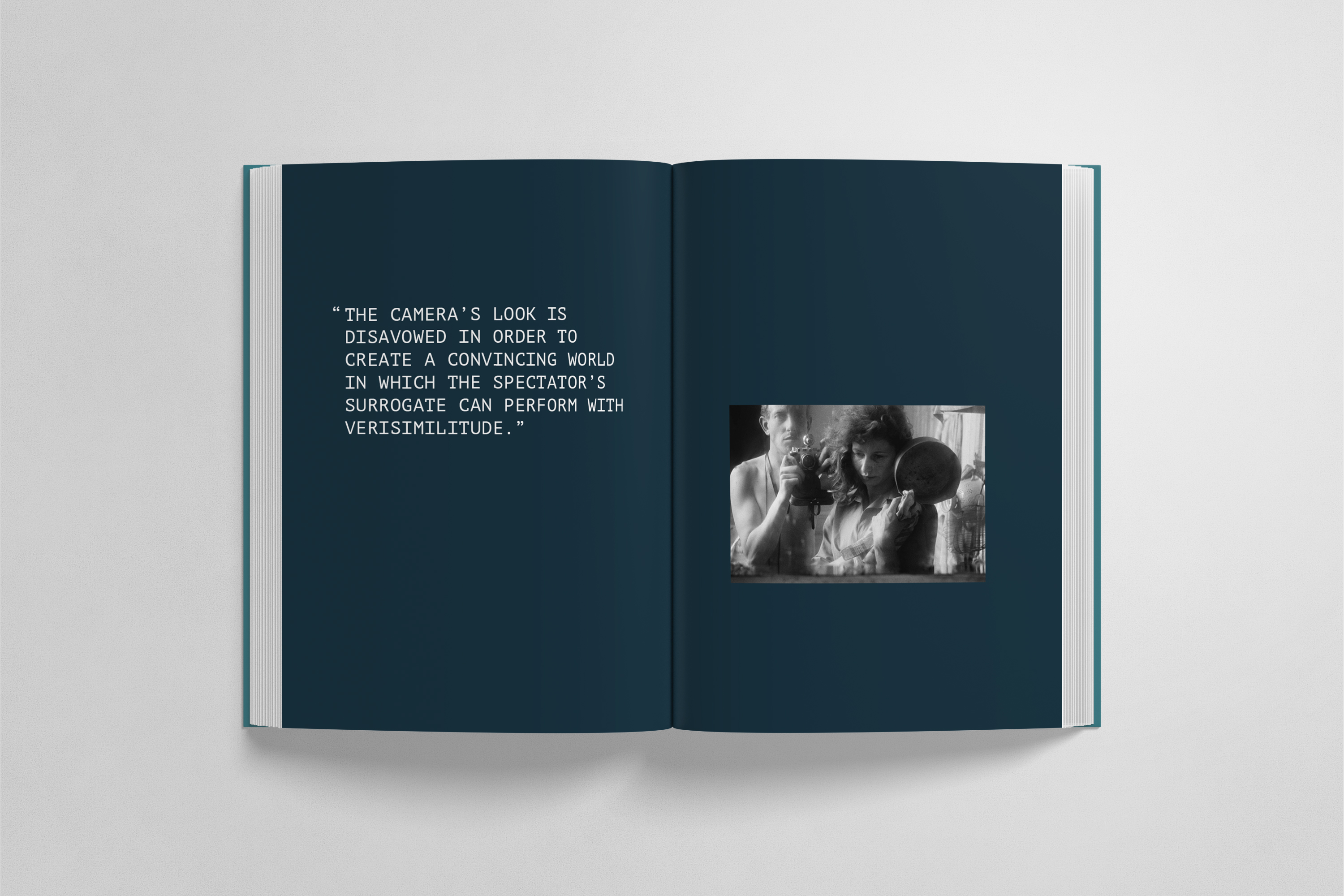
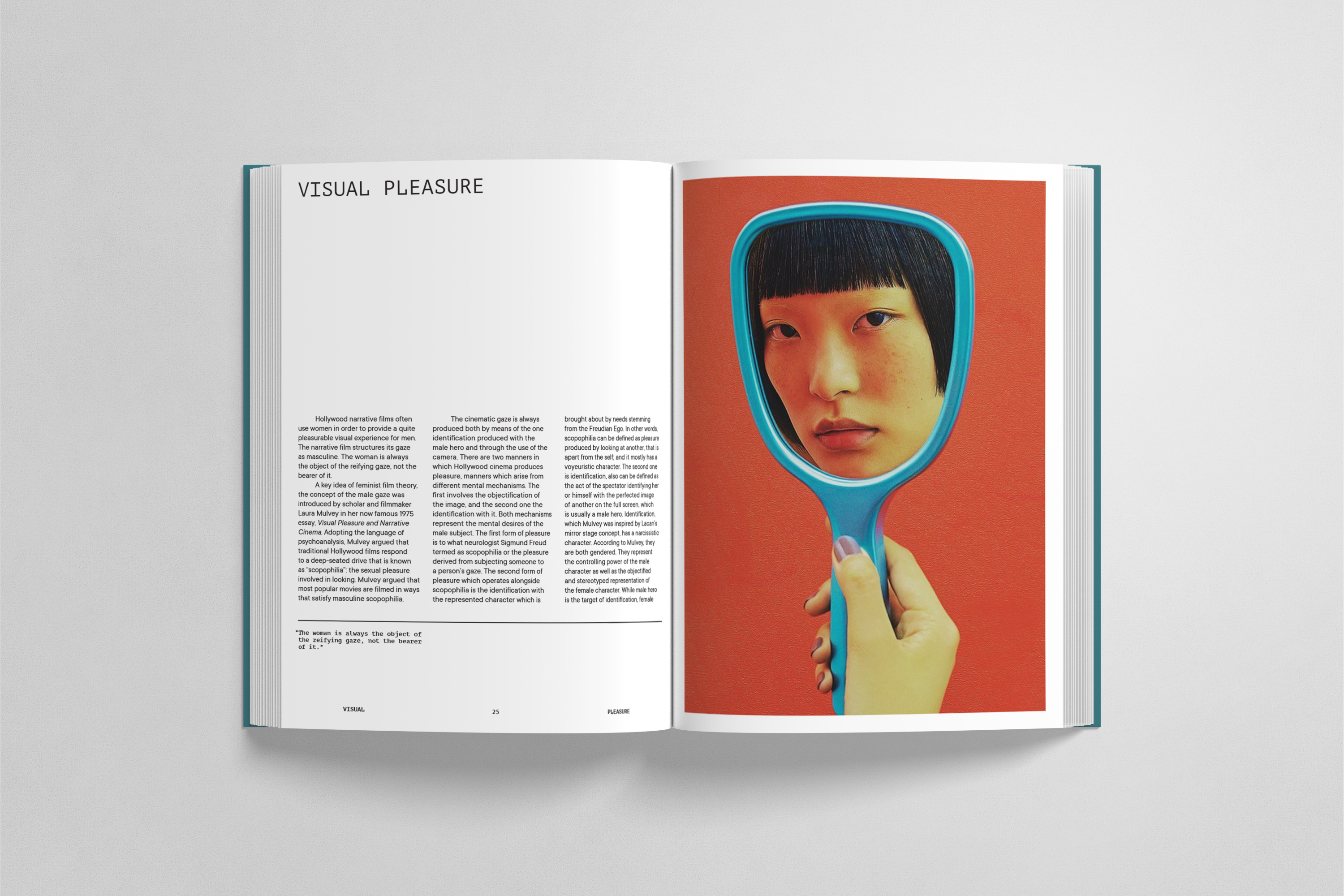
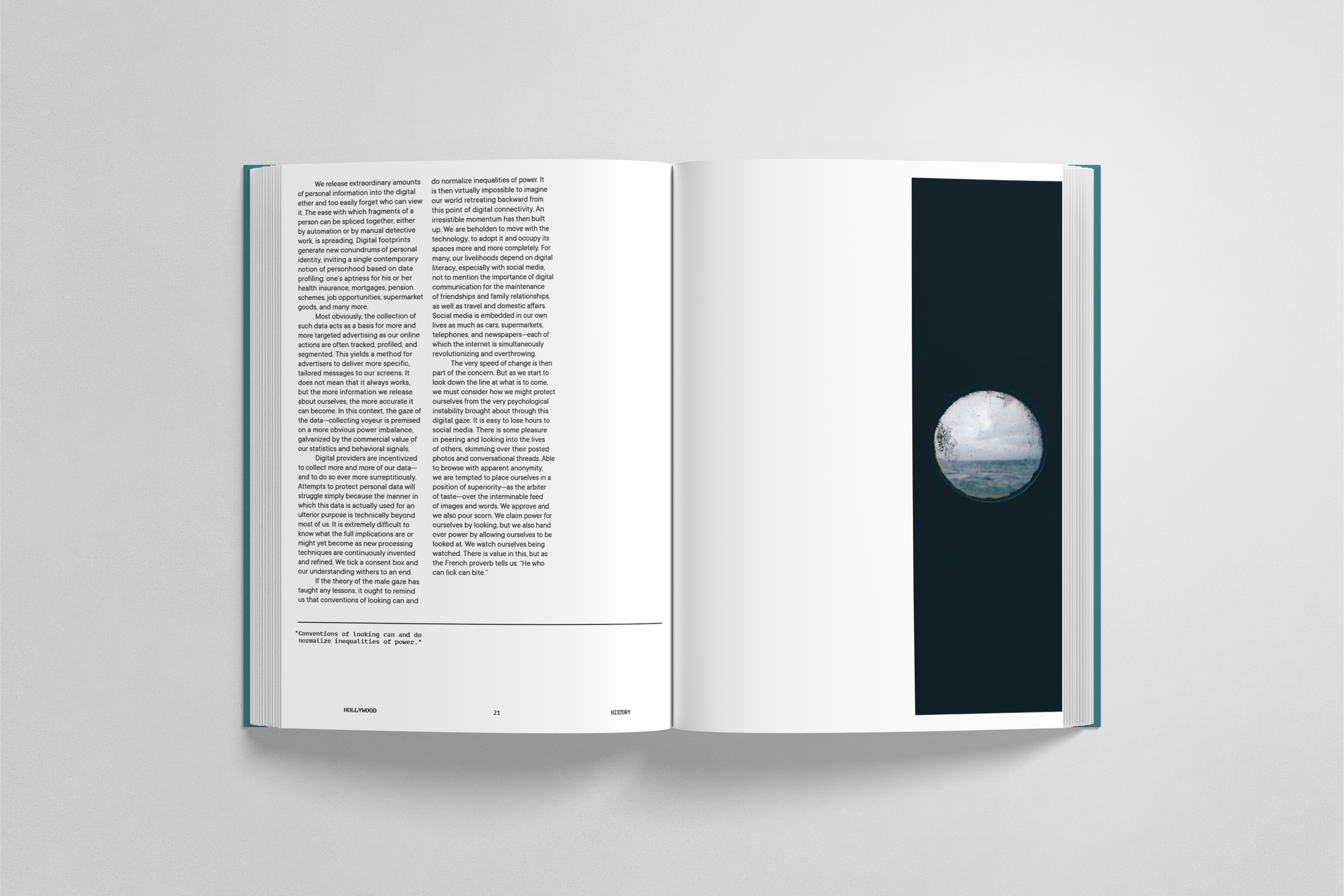
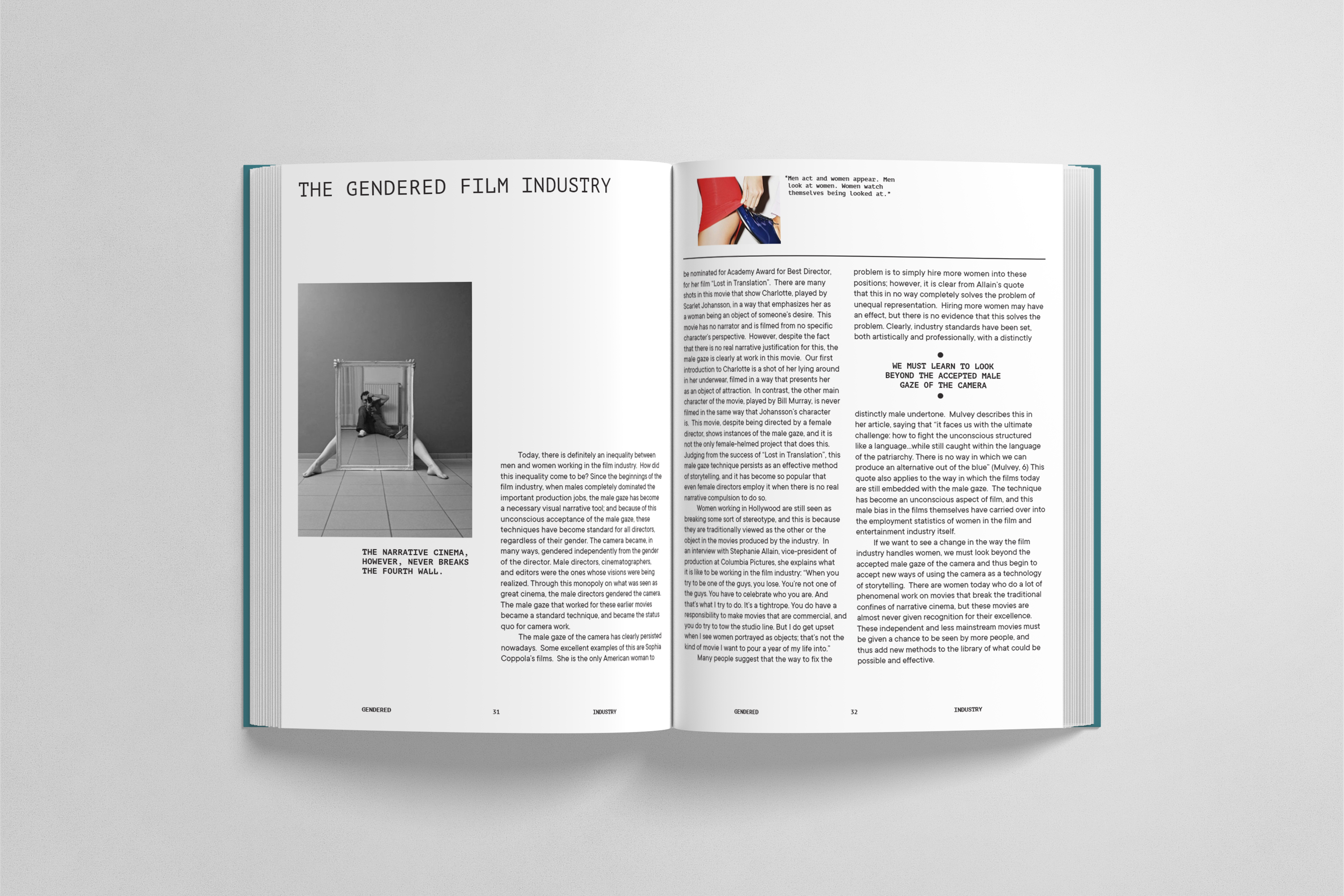
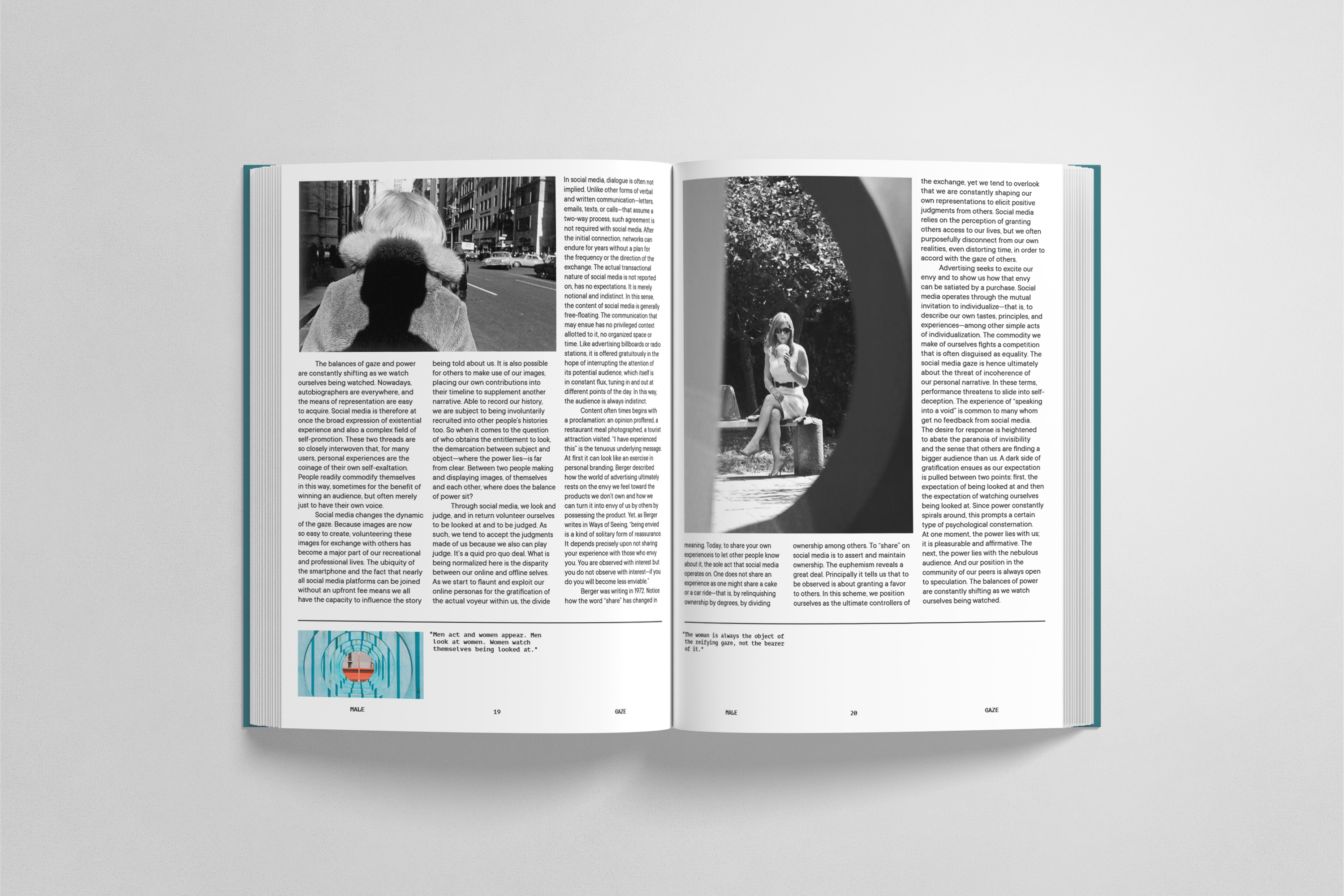
Room 1:
Headless Women of Hollywood
︎︎︎
Headless Women of Hollywood
︎︎︎
The first room is an immersive poster room that introduces formulaic angles or shots in film and advertisements. It features a vertical three panel triptych series that shows the “headless women” of Hollywood. The panels are made up of different movie posters that only show the body parts of women. Each panel will change randomly to show how it is still a standard practice to fragmentize, fetishize, and dehumanize the images of women we see in film, TV, book covers, and advertisement.
As fragmented parts, the viewer does not have to morally reconcile the woman who is being objectified with her complete humanness. Ultimately, Hollywood still uses these kinds of posters because the numbers prove that this type of marketing works. Objectification of women sells, and as long as it sells, Hollywood will keep selling it.
As fragmented parts, the viewer does not have to morally reconcile the woman who is being objectified with her complete humanness. Ultimately, Hollywood still uses these kinds of posters because the numbers prove that this type of marketing works. Objectification of women sells, and as long as it sells, Hollywood will keep selling it.

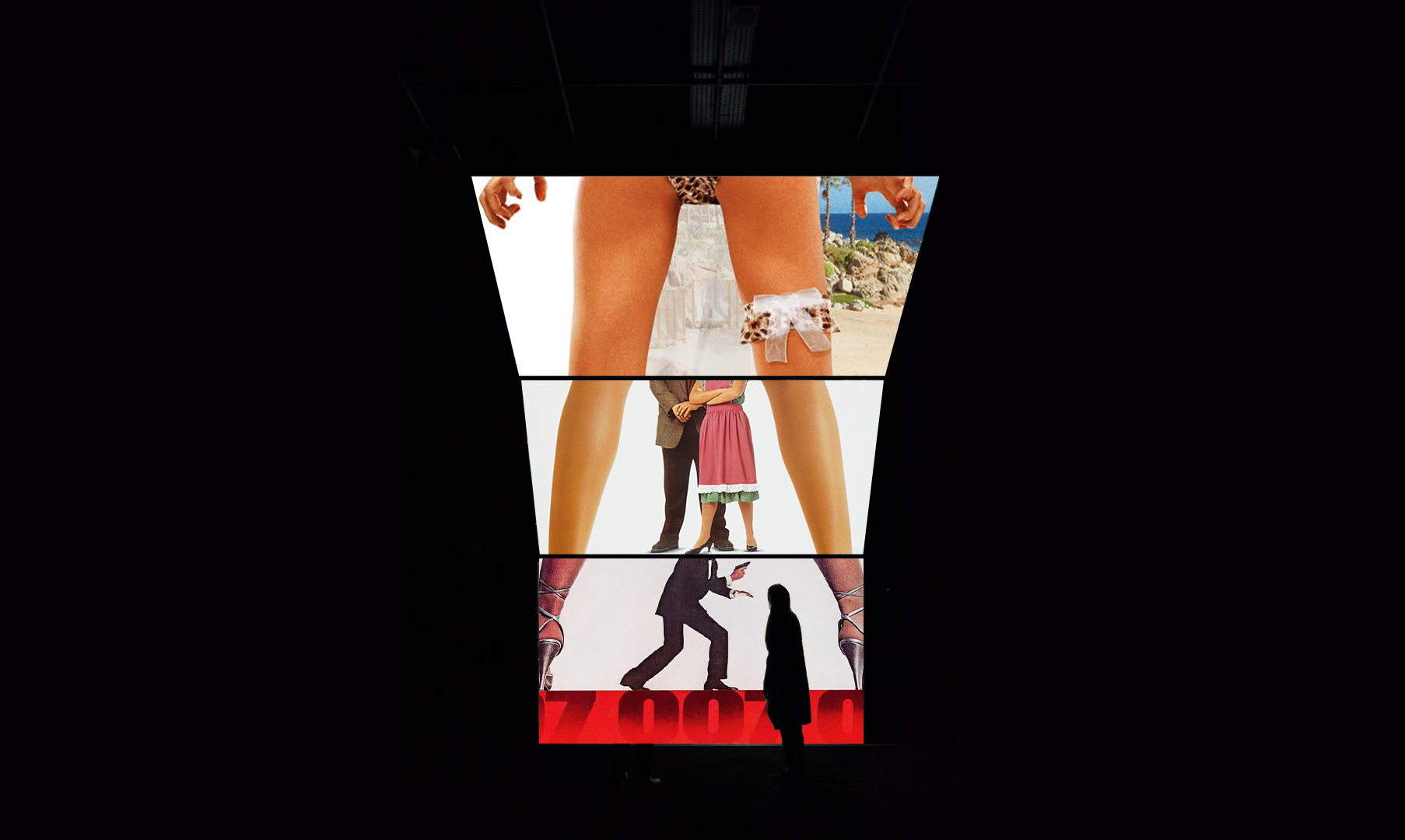
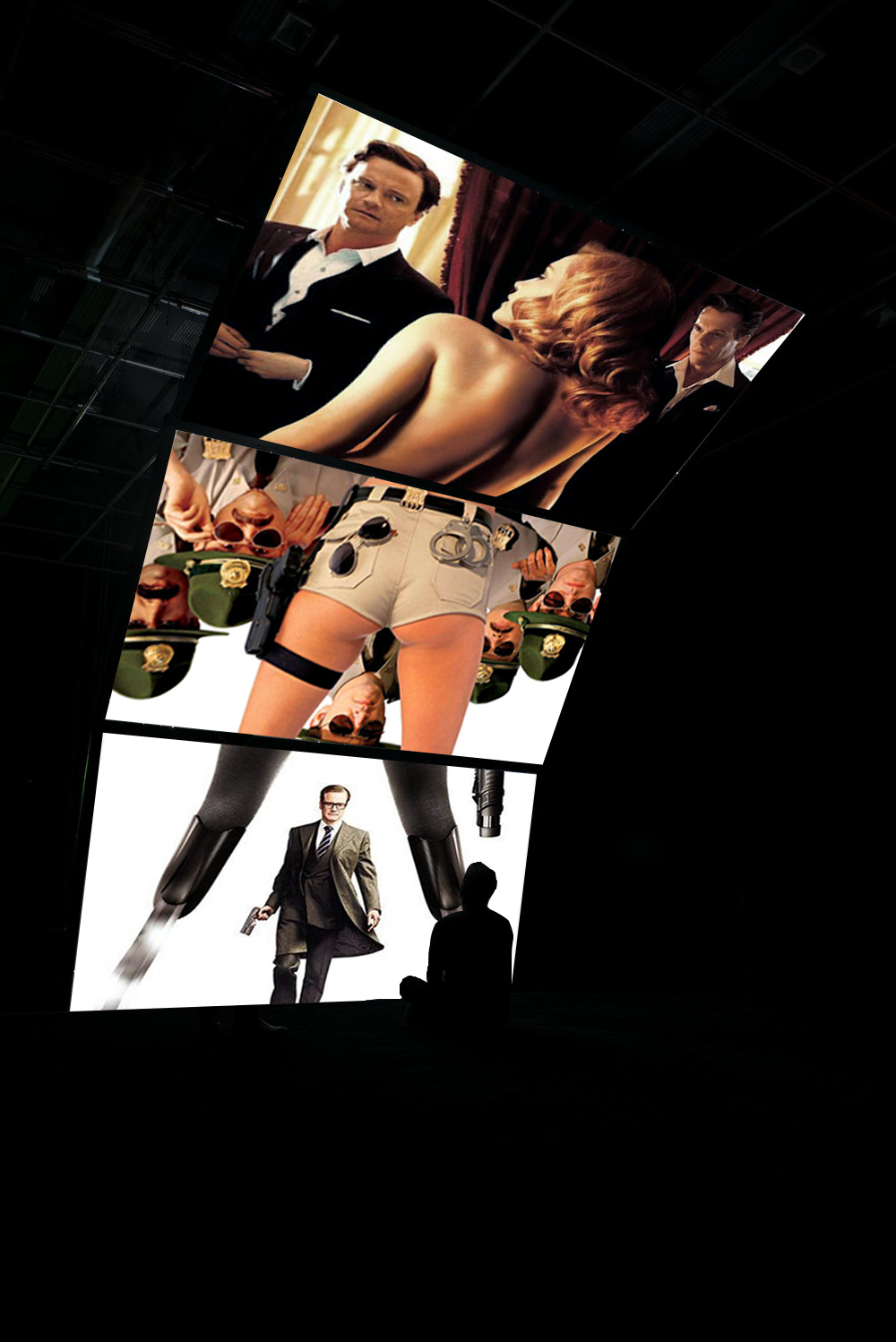
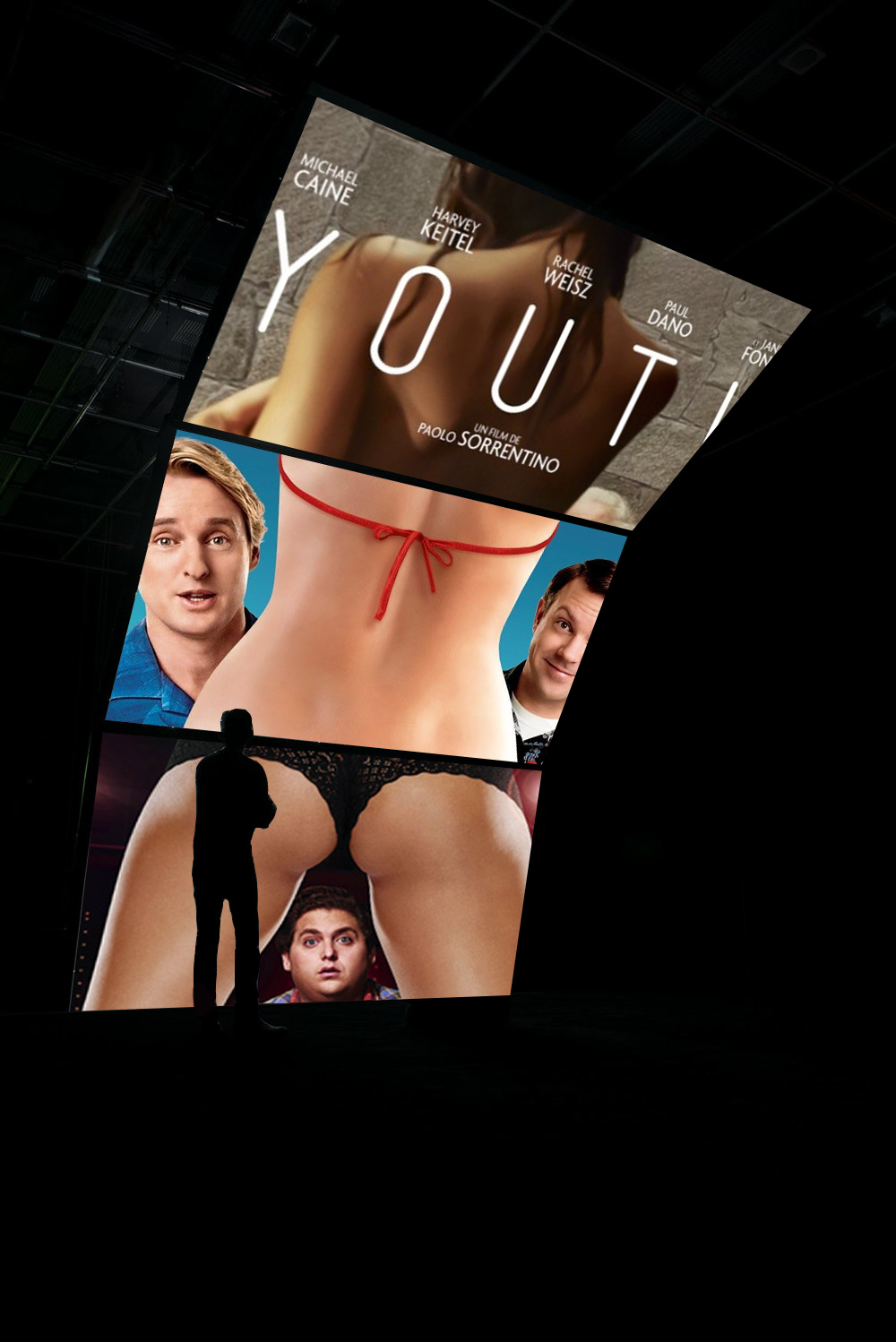
Room 2:
Script Room
︎︎︎
Script Room
︎︎︎
The second room is an immersive script room that takes the formulaic shots as seen in the first room and puts them in action. This is to show how editing can cause false portrayals of reality and how women are represented in films. The second room is a collaboration with artist Doug Aitken, and involves three projection screens that are separated by translucent silkscreens. The middle screen shows a typical Hollywood script that unnecessarily sexualizes women’s body parts, while the other two screens will play different movie clips that actually follow the generic scripts.
The silk screens allow the viewers to see themselves being layered upon the clips to place themselves in the shoes of women being objectified. This also brings in the idea of “the observer” and “the observed”, since viewers that are standing outside of the silkscreen structure can also observe people who are sitting inside and looking at the clips.
The silk screens allow the viewers to see themselves being layered upon the clips to place themselves in the shoes of women being objectified. This also brings in the idea of “the observer” and “the observed”, since viewers that are standing outside of the silkscreen structure can also observe people who are sitting inside and looking at the clips.

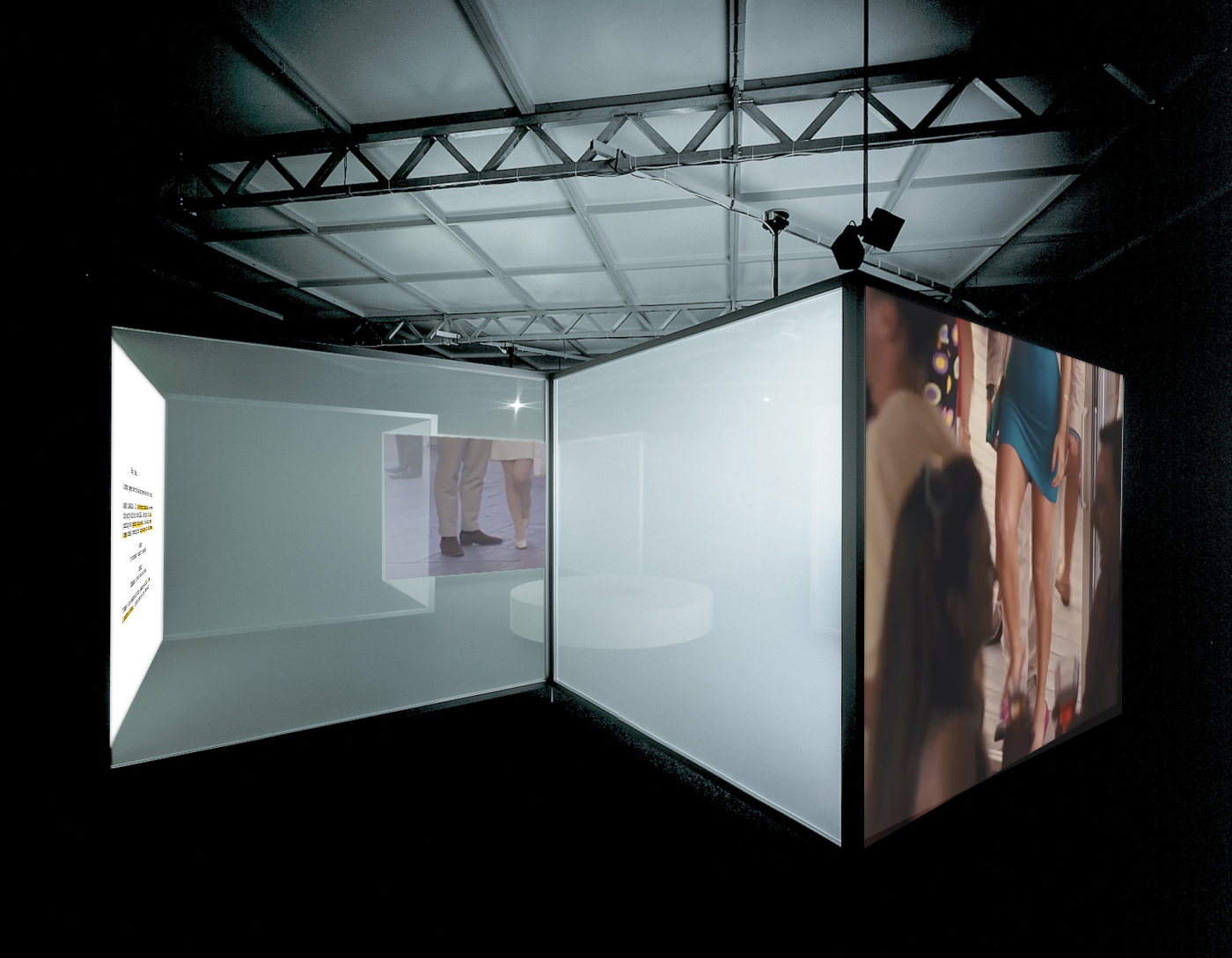
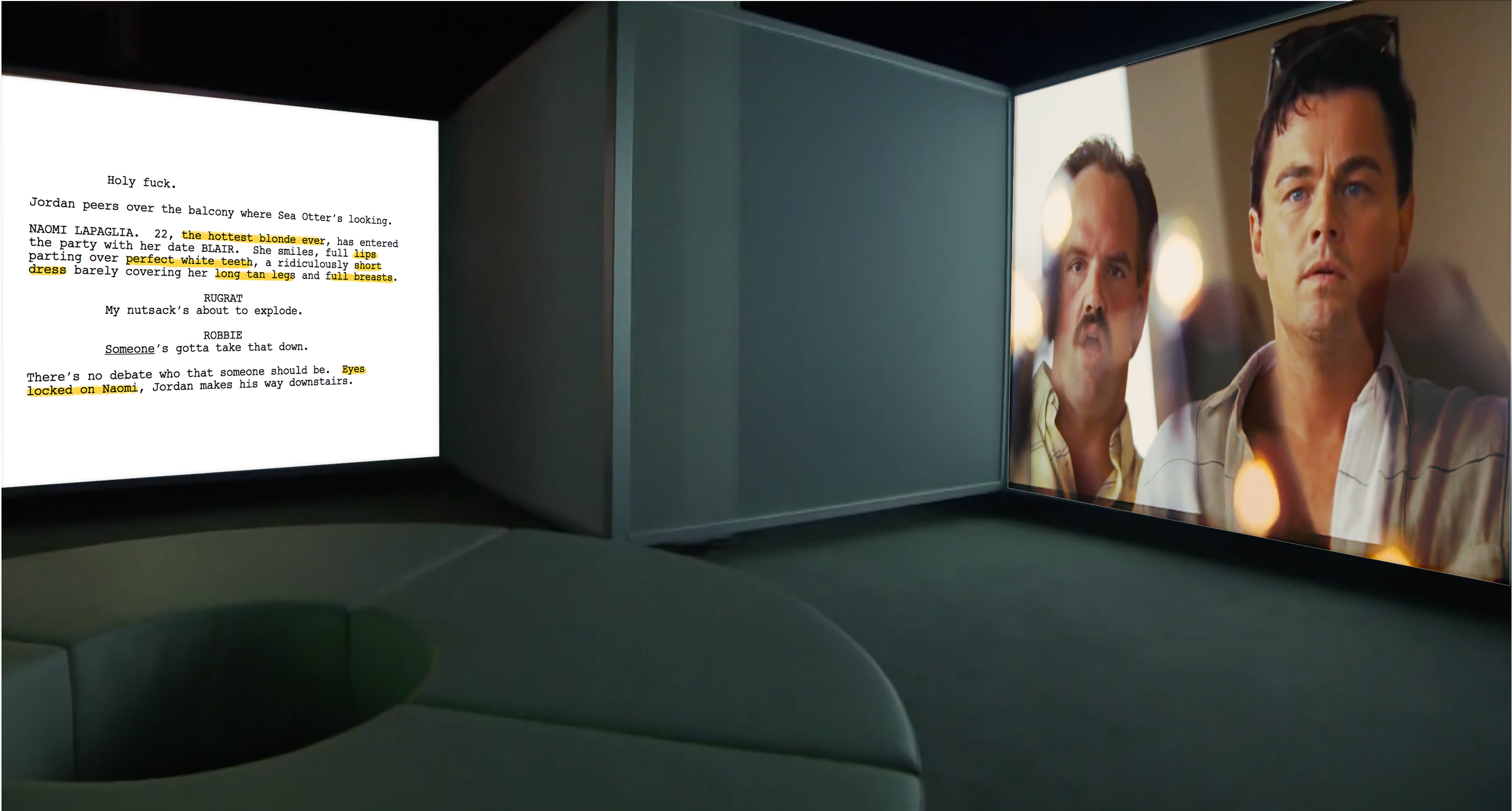
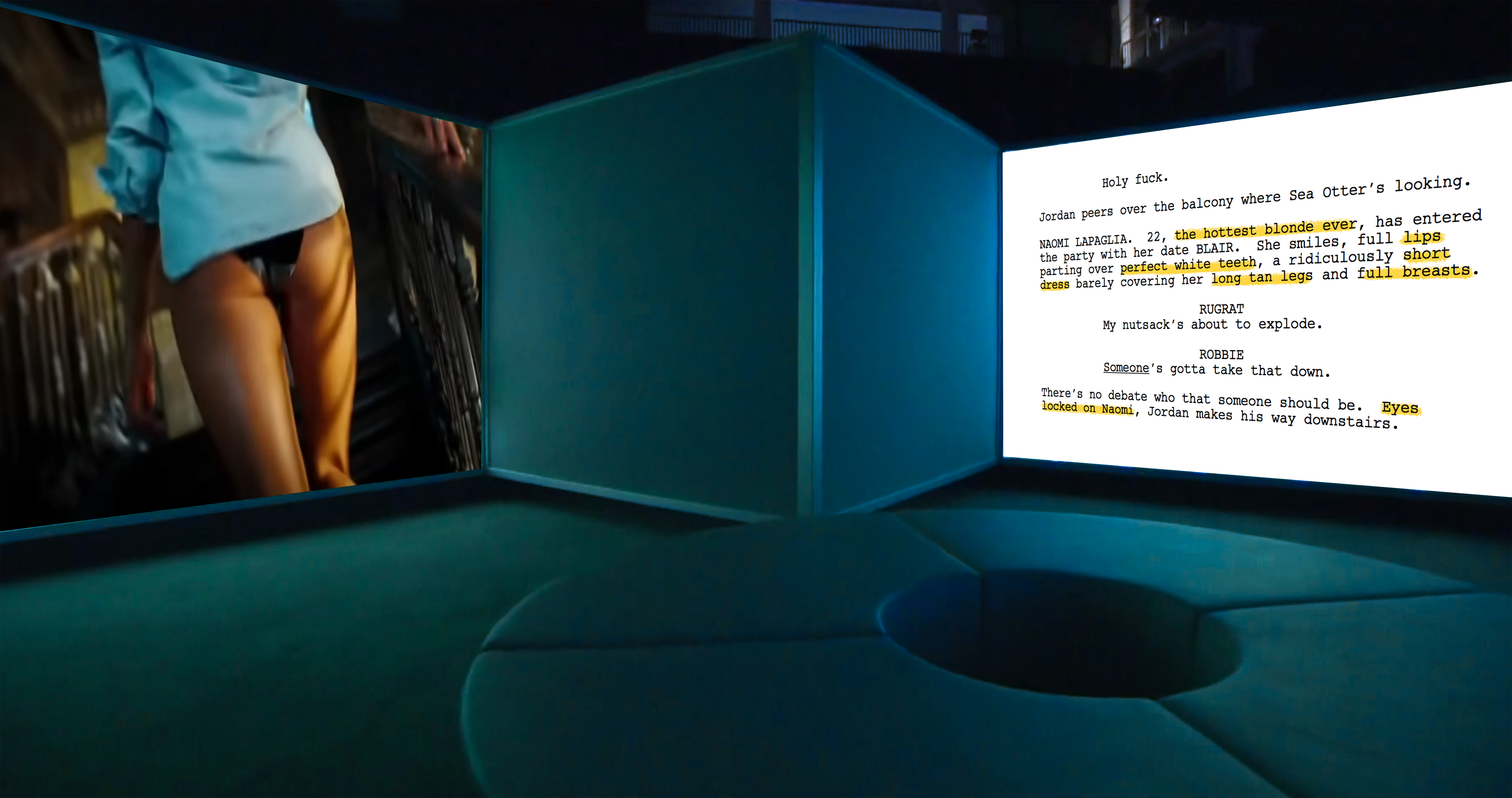
Room 3:
Editing Room
︎︎︎
Editing Room
︎︎︎
The third and final room is an immersive room with eight screens and a mirrored floor. This room introduces the idea of surveillance and the fragmentation of the self. The room magnifies and breaks down different parts of an image to reinforce the detrimental effects of female objectification in media. We identify women as objects when their body parts are unnecessarily sexualized in advertisements. We recognize objects through the details that make it up, which is how women are depicted in the media nowadays.
The eight screen panels show how formulaic shots such as men walking into a scene with a group of women beside him as his trophy, or camera angles that pan from women’s legs to the face are still common in the film industry. Some panels will play a clip from a movie, and each clip will trigger another narrative that will be shown on a different screen. The mirrored floor makes the viewers feel as if they are the victims of the gaze as well. The intent here is to allow viewers to understand the detrimental effects of the male gaze, and change the way we view media in our everyday lives.
The eight screen panels show how formulaic shots such as men walking into a scene with a group of women beside him as his trophy, or camera angles that pan from women’s legs to the face are still common in the film industry. Some panels will play a clip from a movie, and each clip will trigger another narrative that will be shown on a different screen. The mirrored floor makes the viewers feel as if they are the victims of the gaze as well. The intent here is to allow viewers to understand the detrimental effects of the male gaze, and change the way we view media in our everyday lives.
